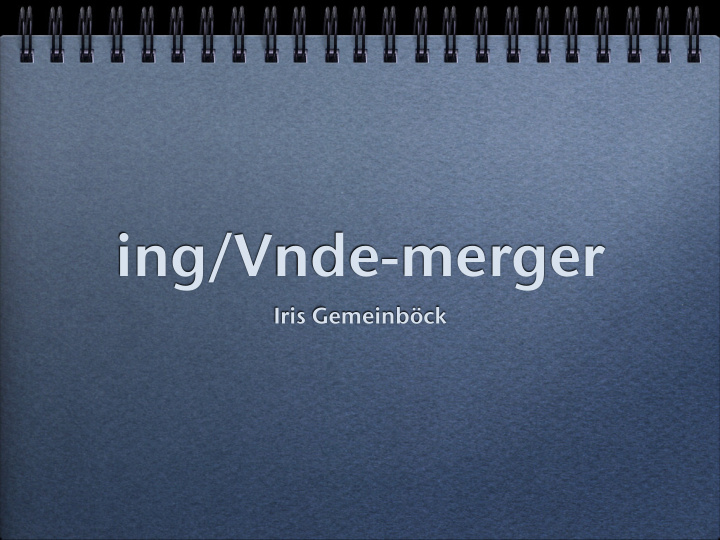



ing/Vnde-merger Iris Gemeinböck
Outline forms: present participle, deverbal noun why is there a problem? distribution of endings for participle, noun an additional player: the infinitive gerund? outlook
Nonfinite forms in OE writ -an infinitive (ge-)writ -en past participle writ -ende, -inde, -and present participle writ -ing (de-)verbal noun
The problem present participle inde (ing), and, ende deverbal noun ‘ing-forms’ (ung), ing (infinitive?)
Present participle forms and(e) end(e) ind(e), ing(e)
Present participle distribution end(e) and(i,e) ind(e) ing(e), yng(e) M1 M2 M3 M34 M4 0 125 250 375 500
(De-)verbal nouns ing(e), yng(e) participle ing(e), yng(e), ung(e) nouns M1 M2 M3 M34 M4 0 375 750 1125 1500
Additional form: infinitive origin: neuter noun, lost most inflection OE: inflected for dative - enne (later - anne ) southern, southwestern, south midlands ME -enne -ende, inde : to flende -inge: to doiinge, to menyinge until 14th century (Lass 1992: 145)
Confusion of ing-forms originally today adjectives present participle: verbal adjective complement to auxiliaries (progressive) ing suffix lexical nouns verbal noun: derived noun verbal nouns (gerunds) infinitive lost suffix (noun-like) infinitive: neuter noun?
Why did ing spread? and(e) end(e) ind(e), ing(e)
Gerund position of noun phrase: John’s anger surprised us. taking a sabbatical John’s surprised us. internal verb phrase structure: John takes a sabbatical.
Gerund in ME? late development unambiguous gerundial constructions: mainly in Reginald Pecock (philosophical texts translation from Latin more from 15th century onwards (Donner 1986) other linguistis: gerund did exist (Tajima 1996, Bauer 1993)
Gerunds? “ bakbytyng_VAG me_PRO ,_, for_P +tat_C ich_PRO folwed_VBD godene” (cmearlps.m2, Earliest Prose Psalter) “+tat_C it_PRO may_MD lufe_VB hym_PRO verraly_ADV ,_, feland_VAG comforth_N and_CONJ delyte_N in_P hym_PRO ,_, owtkastyng_VAG worldes_N$ thoghtes_NS ” (cmrollep.m24, Richard Rolle’s Epistles) “in_P wirkyng_VAG profitabel_ADJ thynges_NS ” (cmrollep.m24, Richard Rolle’s Epistles)
My view It’s a mess. some claims not substantiated separate forms from functions ‘constructions’, patterns
Outlook find texts with different forms? qualitative analysis of ing-forms: function, gerundial? any other interesting research questions?
Bibliography Bauer, Brigitte L.M. 1993. “The coalescence of the participle and the gerund/gerundive: an integrated change”. In Aertsen, Henk; Jeffers, Robert J. (ed). Historical linguistics 1989 : papers from the 9th international conference on historical linguistics, Rutgers University, 14-18 August 1989 . Amsterdam: Benjamins, 59-71. Blake, Norman (ed). 1996. The Cambridge history of the English language: 1066-1476 . Cambridge: Cambridge University Press. Donner, Morton. 1986. “The gerund in Middle English”. English studies: a journal of English language and literature 67(5), 394-400. Gelderen, Elly van. 2006. A history of the English language . Amsterdam: Benjamins. Grzega, Joachim. 1999. “A new view on why, how and how far ing prevailed over ind”. VIEWS: Vienna English Working Papers 8(1), 34-43. Irwin, Betty J. 1967. The development of the -ing ending of the verbal noun and the present participle from c. 700 to c. 1400 . PhD thesis, The University of Wisconsin. Tajima, Matsuji. 1996. “The common/objective-case subject of the gerund in Middle English”. NOWELE 28-29, 569-577.
Recommend
More recommend